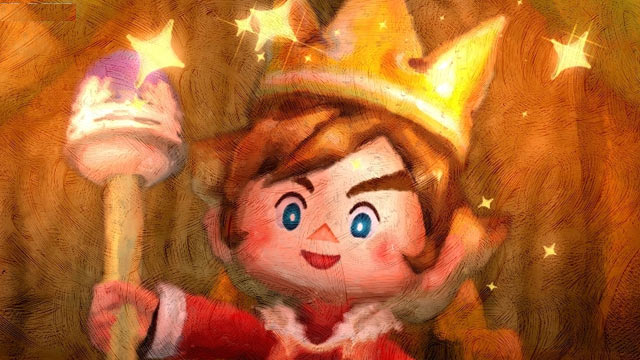
It’s understandable that it’s difficult to be a hardcore Nintendo gamer– hardcore used here as ‘intensely loyal,’ and not ‘extremely explicit,’ the latter of which could cause multiple issues and likely adheres to rule 34 of the Internet. In any case, many may find themselves troubled when topics such as ‘mainstream’ and ‘processing power’ are brought up with respect to Wii and DS. To serve as a lovely reminder, 5 observations are listed below as to why it is still not only acceptable, but perhaps preferable, to be a hardcore Nintendo gamer.
1. Franchises. This pretty much goes without saying: the best part of being a die-hard Nintendo gamer is the franchises. Mario, Zelda, Metroid— these are just a few of the franchises that Nintendo not only maintains today, but does so with seemingly effortless excellence, with each title released in the series having its own ‘wow’ factor. Many detractors may then point out Nintendo’s library of franchises that haven’t been seen in awhile– the Mother series immediately comes to mind– but instead of being hard on Nintendo for not utilizing these excellent series, think instead of them as prize horses in the stable, with Nintendo ready and willing to release them when they see fit. After all, didn’t we just see Kid Icarus and Pilotwings do just that on 3DS, among a slew of other classics? And even with the lower horsepower of Wii and DS when compared to respective competitors (a point that will be addressed below), Nintendo knows its systems well enough to produce games that still deliver style and solid presentation.
2. System and title costs. As mentioned above, there is no doubt in any gamer’s mind that Wii is the weakest when it comes to processing power and graphical output when compared to its contemporaries; DS is no different when compared to PSP. While many may gripe and moan about this, one must remember a point of assurance: the prices are lower. When first released, most PS3 and Xbox 360 titles are $60 a pop, while Wii gamers can rest assured that the titles they snag will be $10 lower. While DS and PSP titles are comparable in price, just look at the price of entry– the lowest price point for PSP as of this writing is $169.99, whereas DS enjoys $129.99. It also goes without saying when comparing Wii to PS3 and Xbox 360. The cheapest PS3 model is $299.99, which comes with no games; the cheapest bundles for both Wii and Xbox 360 are $199.99 each, both offering two games, but the latter with no hard drive.
3. Free online. While PS3 owners also enjoy free online, this is still a leg up on the Xbox 360 crowd, where for full online play a paid subscription is required. Online play for Wii has admittedly yet to establish itself as a viable service, but third party companies such as Activision and High Voltage Software have been doing their best to work with what the system provides, showing that even within the limited framework, much can be achieved with this online service that is offered gratis. This is a notion that should not discourage Nintendo gamers, but rather excite them, as there is plenty of room for growth that, if realized, will offer a great system.
4. Uniqueness. Many may complain about the shovelware that appears to overwhelm both Wii and DS libraries, a claim that cannot be denied. However, looking at the PlayStation and PlayStation 2 before them show how great games can still stand above the glut of shovelware; Wii and DS are no different. There is a reason shovelware exists on these systems, and the reason is that games sell well on these systems. As a result, developers– while often accused of playing it safe– are also able to take more risks, as sales of a title are generally more assured than for other systems. Looking at unique titles such as Scribblenauts and MadWorld are just two examples of games that were given the light of day on Nintendo’s systems, for better or worse, that likely would not have been had developers not believed that there was not only a market for the titles, but that there was still a chance for success.
5. Gameplay. Gameplay still reigns as king on both Wii and DS. For Wii, while many believe that motion controls have bastardized the gaming front, there are several examples of titles that have handled the motion gaming admirably for a more immersive experience, such as The Conduit, Wii Sports and Zack & Wiki. Not only that, but by rotating the Wii Remote controller just 90 degrees, gamers have that lovable controller scheme similar to a NES controller, allowing for the nostalgia to ooze even more out of Virtual Console titles. The DS offers its touch screen for gameplay purposes while also maintaining the classical approach, which broadens the scope by which developers can create titles.
The hope is that these five observations will not only remind Nintendo gamers of what it is they love about their systems, but to also inspire them to think of a multitude of other reasons that are not covered in this article– to all hardcore Nintendo gamers out there, game on.




 ShareThis
ShareThis






